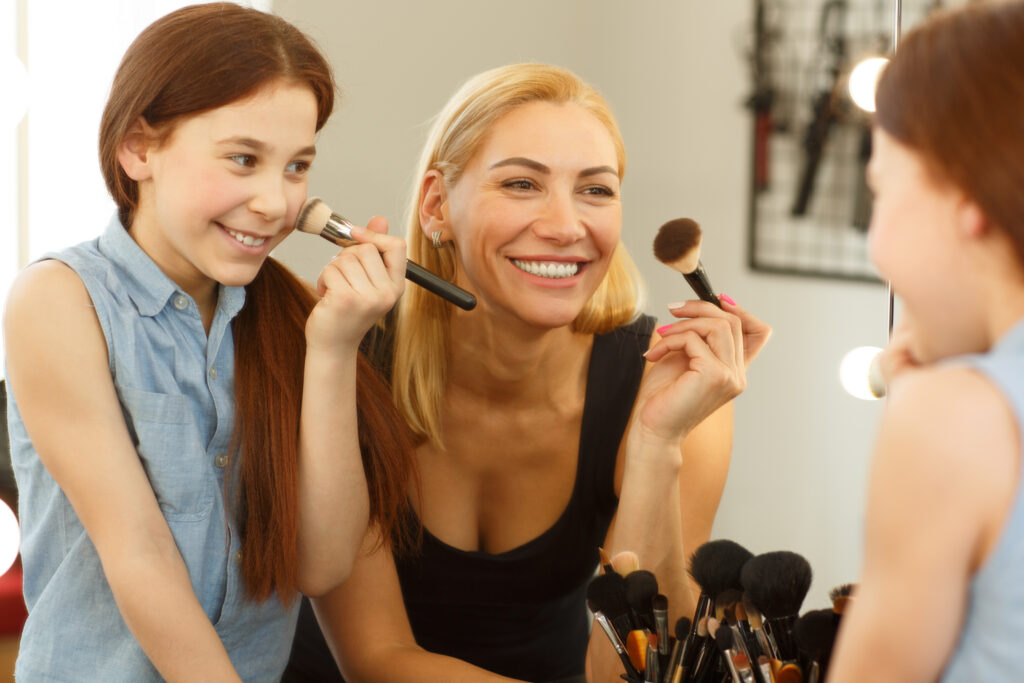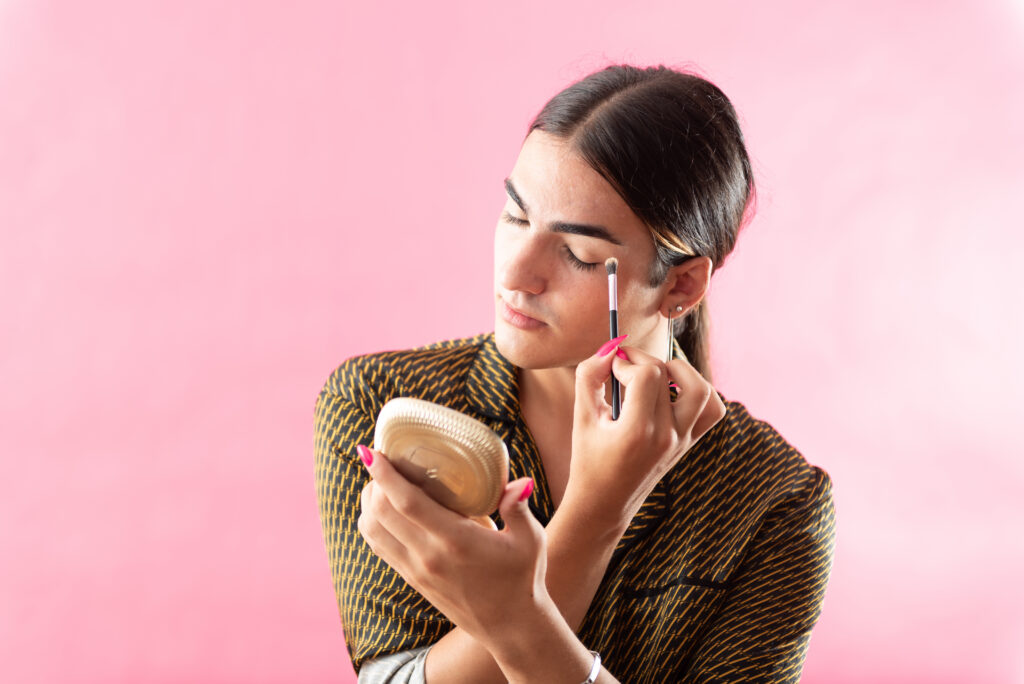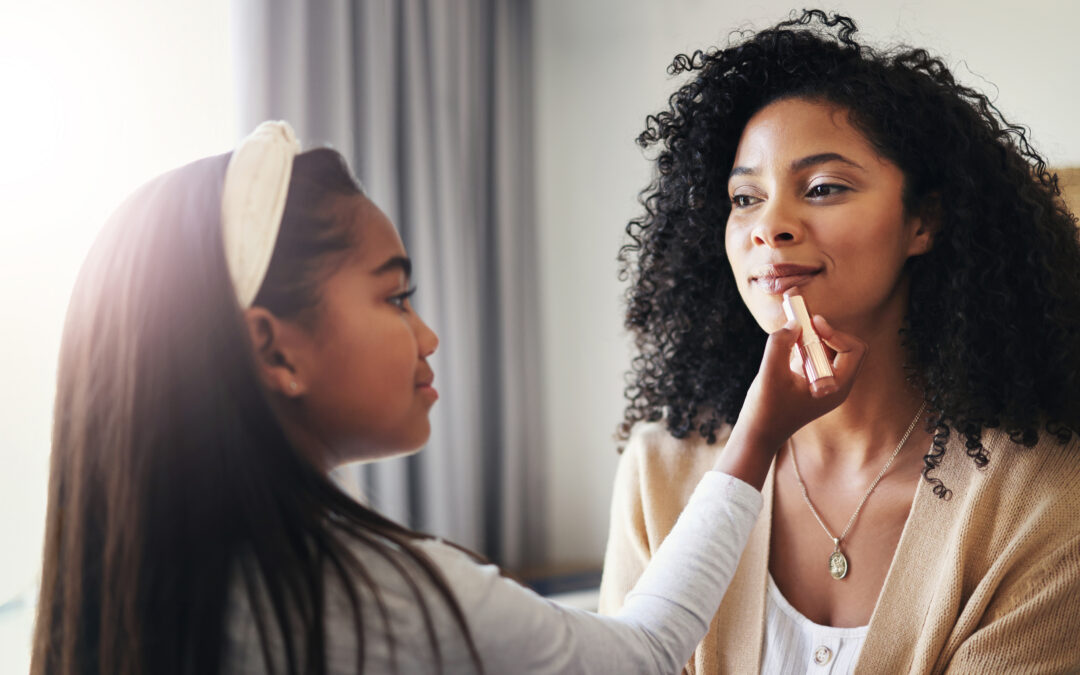Encourage creativity, set boundaries, and help build confidence through beauty

Makeup isn’t just about mascara and highlighter—it’s a form of self-expression, identity exploration, and sometimes even a confidence booster. And for kids and teens, makeup can be a big deal. Whether your child is experimenting for fun, curious about trends, or learning to express their gender identity, your reaction matters more than you think.
Supporting your child’s interest in makeup doesn’t mean saying “yes” to everything—it means listening, guiding, and creating space for them to explore safely and confidently.
1. Lead With Curiosity, Not Control
If your child shows interest in makeup, start with a question, not a lecture. Ask what excites them about it. Is it the creativity? The confidence boost? The influence of a favorite YouTuber?
Starting with curiosity lets your child know you’re open, not reactive. It also helps you understand what makeup means to them—which is the foundation of trust and communication.
2. Make It About Expression, Not Perfection
Help your child see makeup as something to play with—not something to hide behind. Compliment their creativity, their color choices, their blending skills—not just whether they “look good.”
Frame makeup as a fun form of art, not a standard to live up to. That mindset encourages confidence instead of comparison.
3. Teach Healthy Beauty Habits Early
If your child is starting to wear makeup regularly, this is the perfect time to teach the basics of skin health and hygiene:
- Always wash off makeup before bed
- Don’t share eye or lip products (to avoid bacteria)
- Use clean brushes and tools
- Patch test new products for allergies
Teaching this now helps them build habits that will last long after the experimenting stage.
4. Set Age-Appropriate Boundaries Together
It’s okay to have boundaries. Maybe you’re comfortable with tinted lip balm but not false lashes just yet. Instead of laying down rules unilaterally, try this:
“I love that you’re getting into makeup. Let’s talk about what feels right for now and what we can revisit later.”
This way, you’re opening a conversation—not a shutdown.
5. Keep Gender Stereotypes Out of It
Makeup is for whoever wants to use it. If your child is nonbinary, gender-nonconforming, or simply exploring their identity, makeup might be part of that journey. Your support—verbal, emotional, and practical—can make all the difference in helping them feel seen and safe.

6. Share the Mirror
Sit down and play together. Try a fun look, watch a tutorial, or let them give you a makeover. These shared moments build connection, lower pressure, and remind your child that you’re on their team.
7. Talk About Media, Filters, and Real Skin
Makeup and beauty filters go hand-in-hand now, especially on social media. Talk openly about what’s real and what’s edited. Normalize texture, acne, and imperfections—and remind them that beauty doesn’t start or stop with a product.
These conversations help them separate healthy self-expression from unrealistic comparison.
Final Thought
Supporting your child’s interest in makeup is about more than brushes and palettes—it’s about building trust, confidence, and communication. You don’t need to be a beauty expert. You just need to show up with love, openness, and a willingness to learn together.
Makeup will come and go—but the way you respond will stay with them for life.

